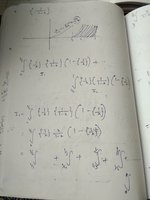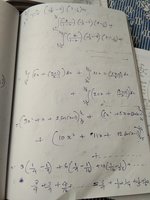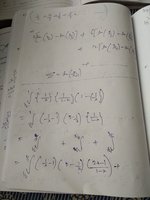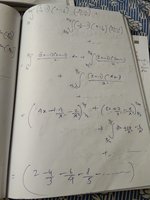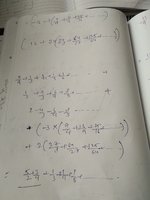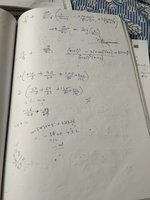You are using an out of date browser. It may not display this or other websites correctly.
You should upgrade or use an alternative browser.
You should upgrade or use an alternative browser.
Integrate
- Thread starter Shreya
- Start date
D
Deleted member 4993
Guest
First simplify the expression:
\(\displaystyle \left[\frac{1}{x}\right]*\left[\frac{1}{1-x}\right]*\left[1-\frac{1}{x}\right]\)
Then integrate.
Please show us what you have tried and exactly where you are stuck.
Please follow the rules of posting in this forum, as enunciated at:
https://www.freemathhelp.com/forum/threads/read-before-posting.109846/#post-486520
Please share your work/thoughts about this assignment.

I break integral at 1/2
Then i try to evaluate the integral from 0 to 1/2 and 1/2 to 1 , I try to see how the integrand behaves from graph
But I m getting some series which I can't evaluate
My idea is I should get two converging series, one from 0 to 1/2 and other from 1/2 to 1 , but I m unable to evaluate those , I think something better is possible, please help
Then i try to evaluate the integral from 0 to 1/2 and 1/2 to 1 , I try to see how the integrand behaves from graph
But I m getting some series which I can't evaluate
My idea is I should get two converging series, one from 0 to 1/2 and other from 1/2 to 1 , but I m unable to evaluate those , I think something better is possible, please help
D
Deleted member 4993
Guest
Did you post the complete problem?I break integral at 1/2
Then i try to evaluate the integral from 0 to 1/2 and 1/2 to 1 , I try to see how the integrand behaves from graph
But I m getting some series which I can't evaluate
My idea is I should get two converging series, one from 0 to 1/2 and other from 1/2 to 1 , but I m unable to evaluate those , I think something better is possible, please help
What does the statement
Where {x} is fractional part of x
mean?
Did you post the complete problem?
What does the statement
Where {x} is fractional part of x
mean?
The problem is complete
That curly braces in each term in integrand denotes fractional part of x, that is
{x}=x-greatest integer of x
Basically it means only the decimal part of x
That's why its not that easy to simplify the integrand
Kindly help
Dr.Peterson
Elite Member
- Joined
- Nov 12, 2017
- Messages
- 16,872
Interesting problem. Is it for a class, or something like a contest problem?I break integral at 1/2
Then i try to evaluate the integral from 0 to 1/2 and 1/2 to 1 , I try to see how the integrand behaves from graph
But I m getting some series which I can't evaluate
My idea is I should get two converging series, one from 0 to 1/2 and other from 1/2 to 1 , but I m unable to evaluate those , I think something better is possible, please help
I observe that of the three factors, the first and last are discontinuous at x = 1/n for any integer (since then 1/x is an integer), and the middle factor is discontinuous when 1-x=1/m, that is, when x = 1-1/m for m an integer. So my first thought is to break up the integral as two infinite sums, which may well be closely related.
But maybe that's exactly what you've done. Why not show us the series you got (and how you got them), so we can check them out? I haven't tried actually doing it yet.
Steven G
Elite Member
- Joined
- Dec 30, 2014
- Messages
- 14,603
Can you please show us how to simplify? If you prefer a private message is fine.First simplify the expression:
\(\displaystyle \left[\frac{1}{x}\right]*\left[\frac{1}{1-x}\right]*\left[1-\frac{1}{x}\right]\)
Then integrate.
View attachment 19735
Have a look sirInteresting problem. Is it for a class, or something like a contest problem?
I observe that of the three factors, the first and last are discontinuous at x = 1/n for any integer (since then 1/x is an integer), and the middle factor is discontinuous when 1-x=1/m, that is, when x = 1-1/m for m an integer. So my first thought is to break up the integral as two infinite sums, which may well be closely related.
But maybe that's exactly what you've done. Why not show us the series you got (and how you got them), so we can check them out? I haven't tried actually doing it yet.
